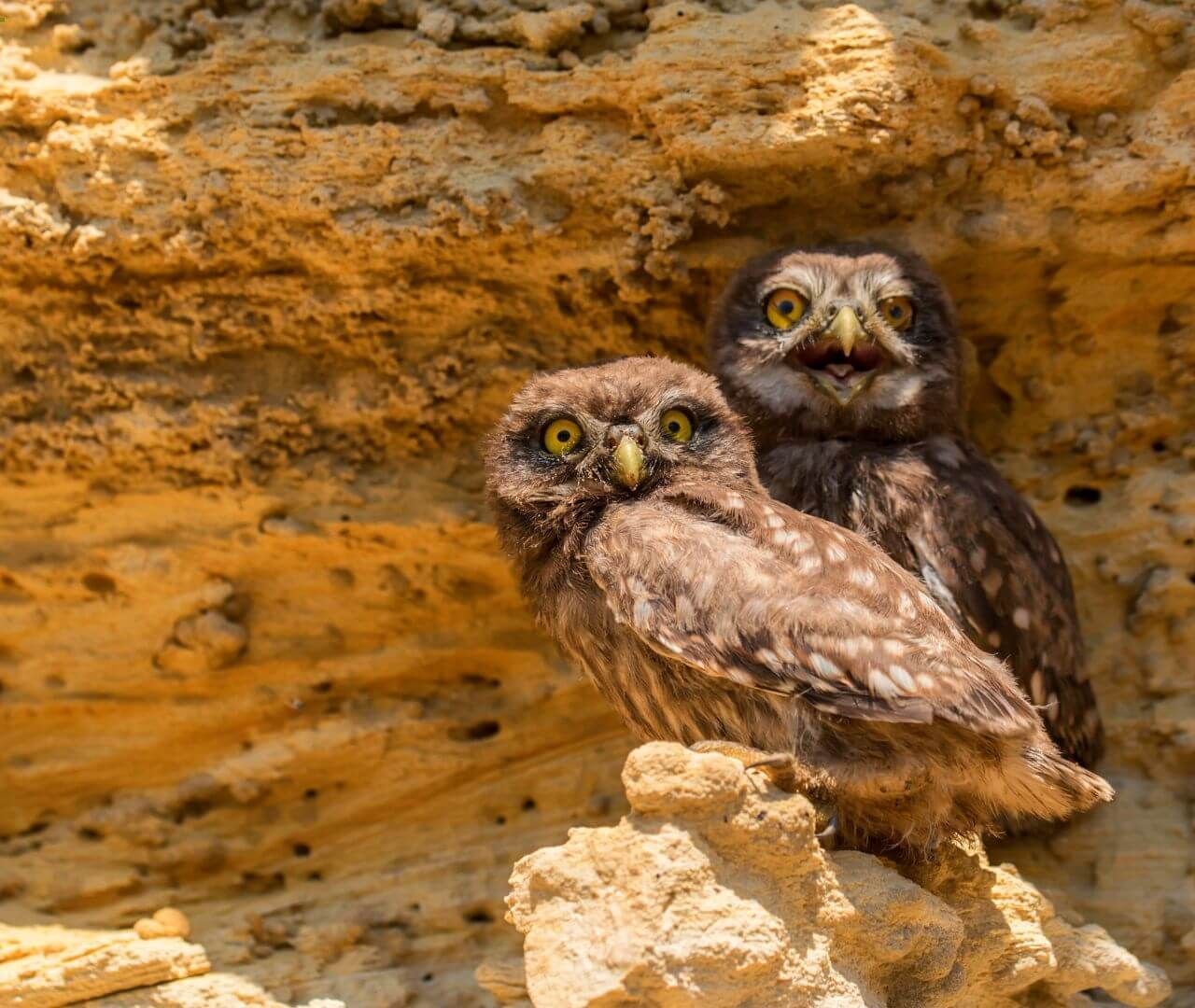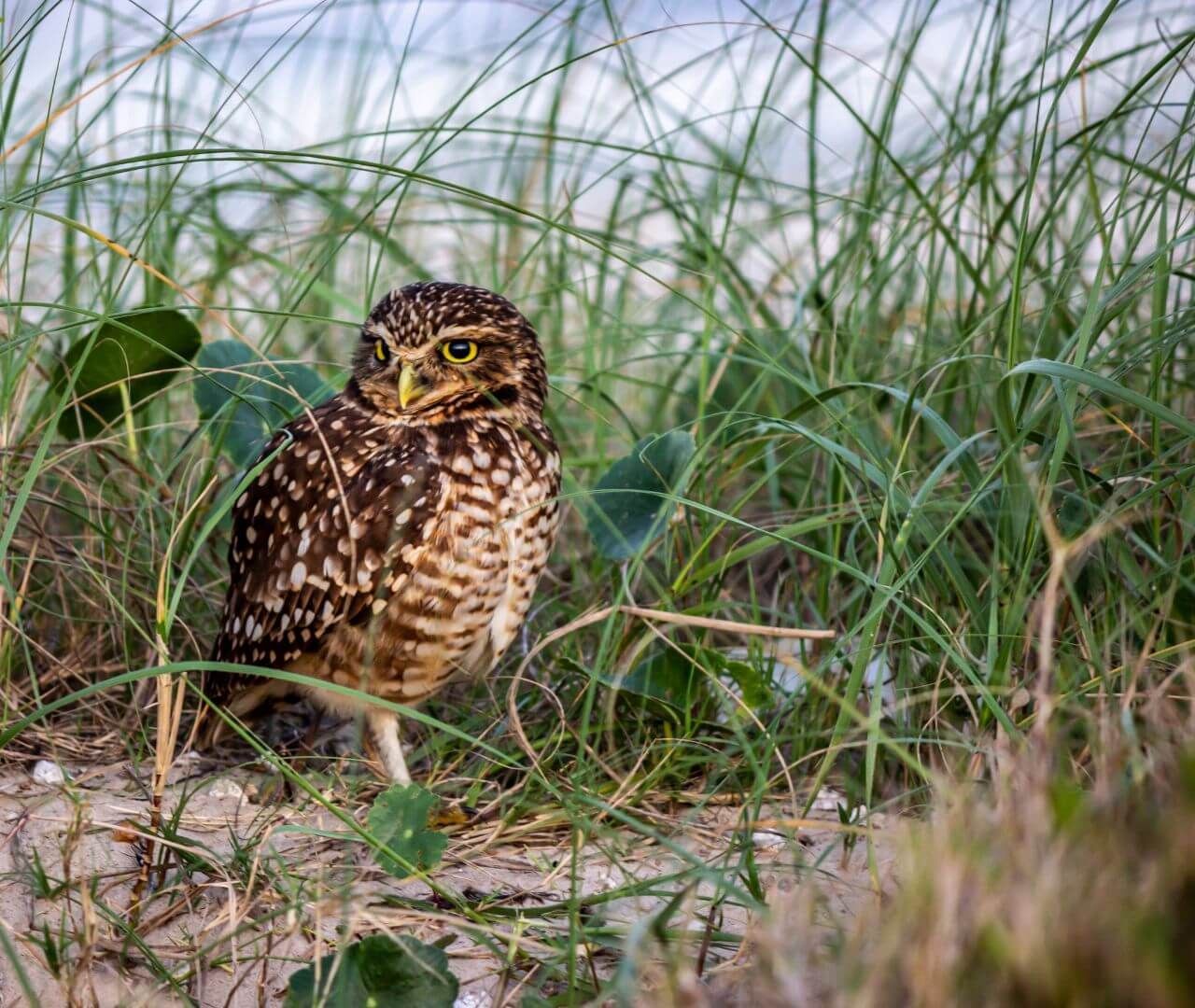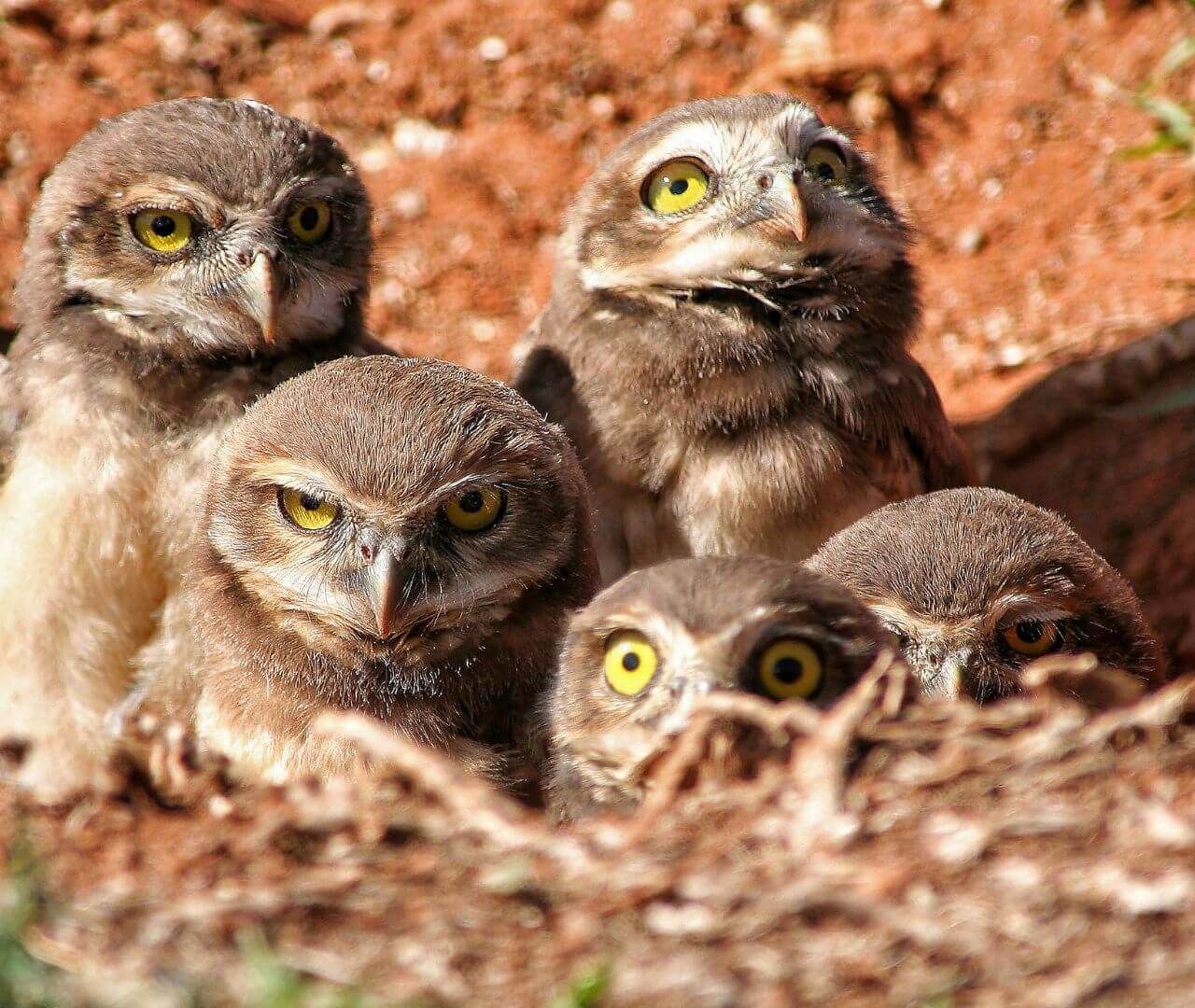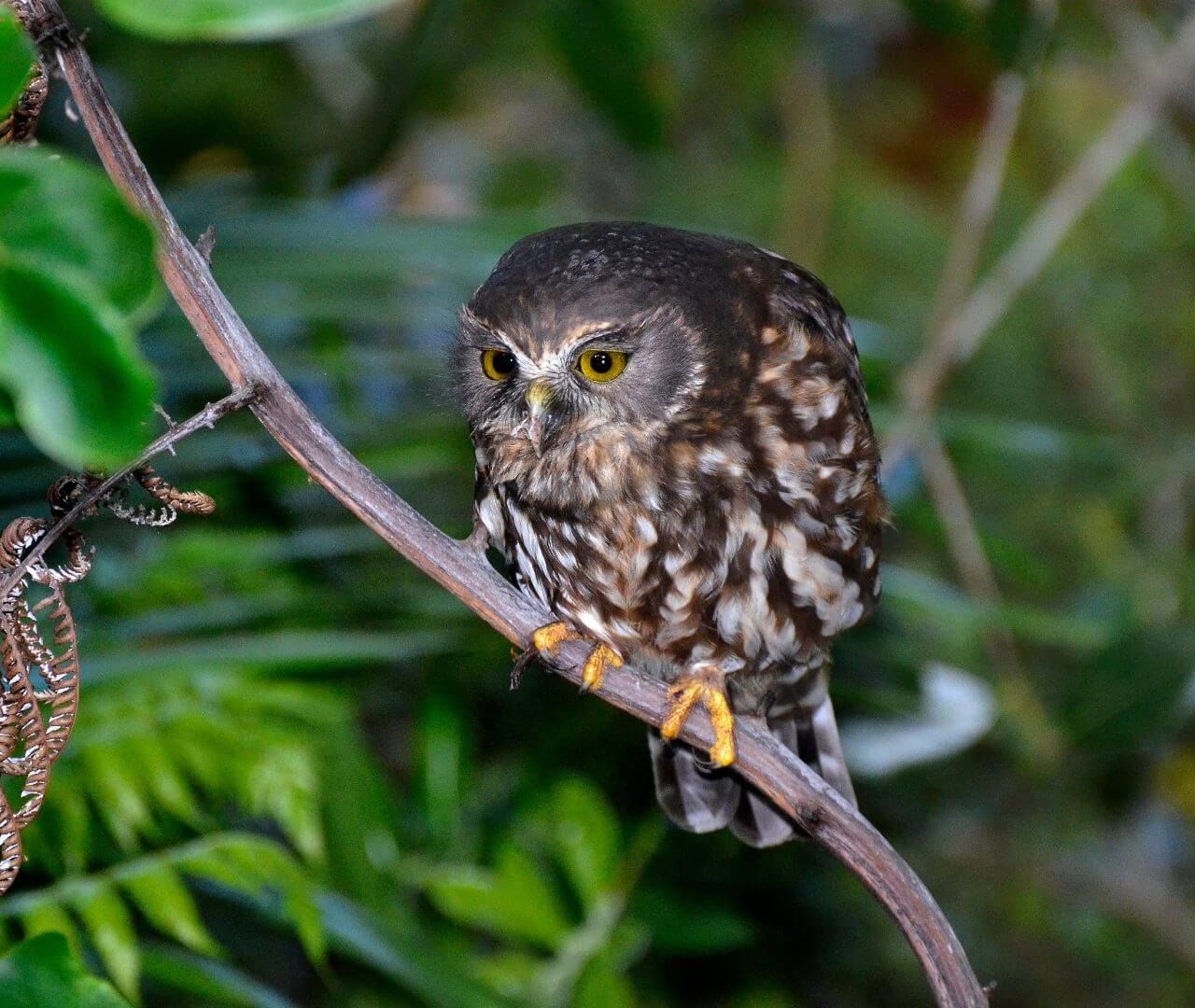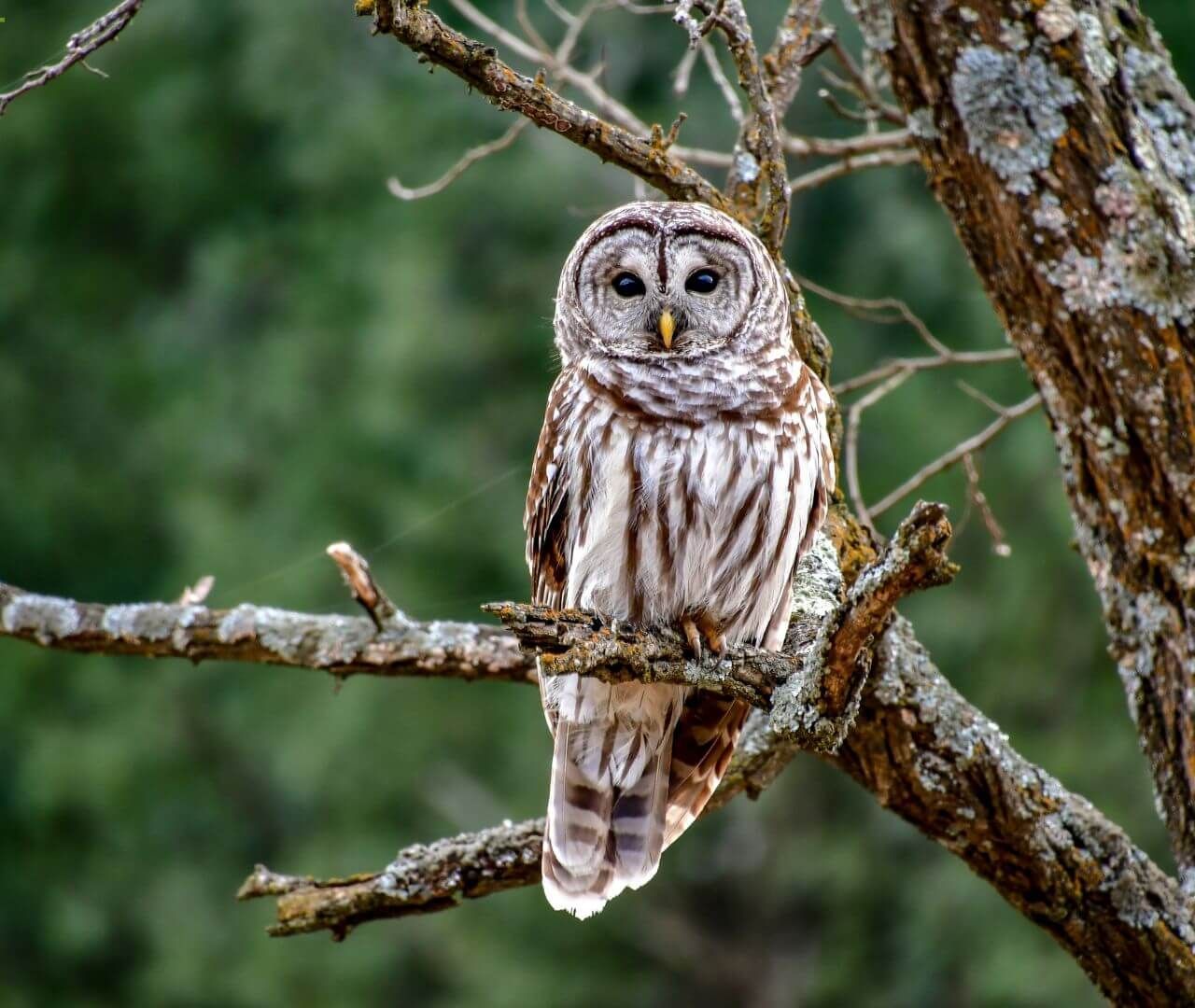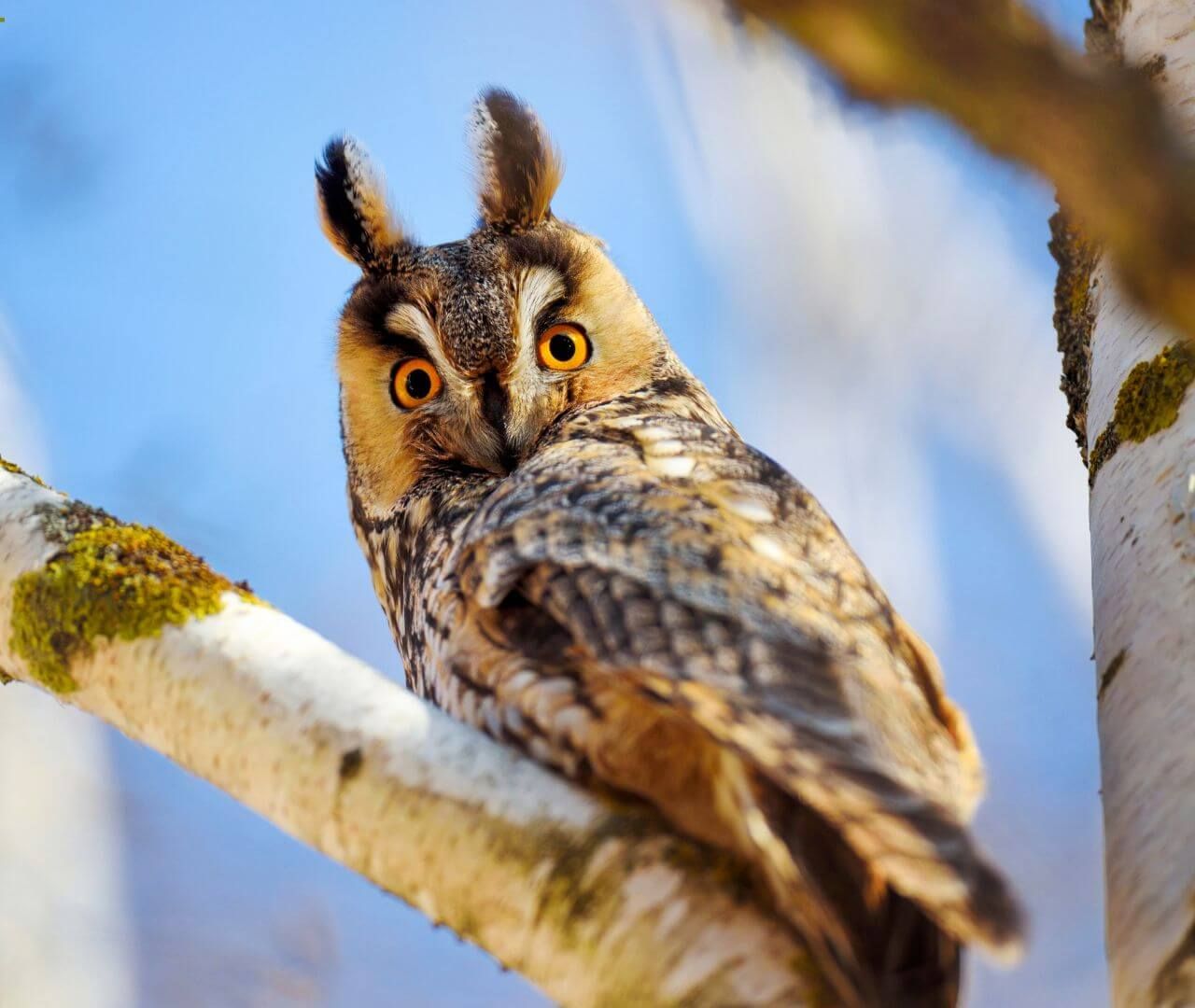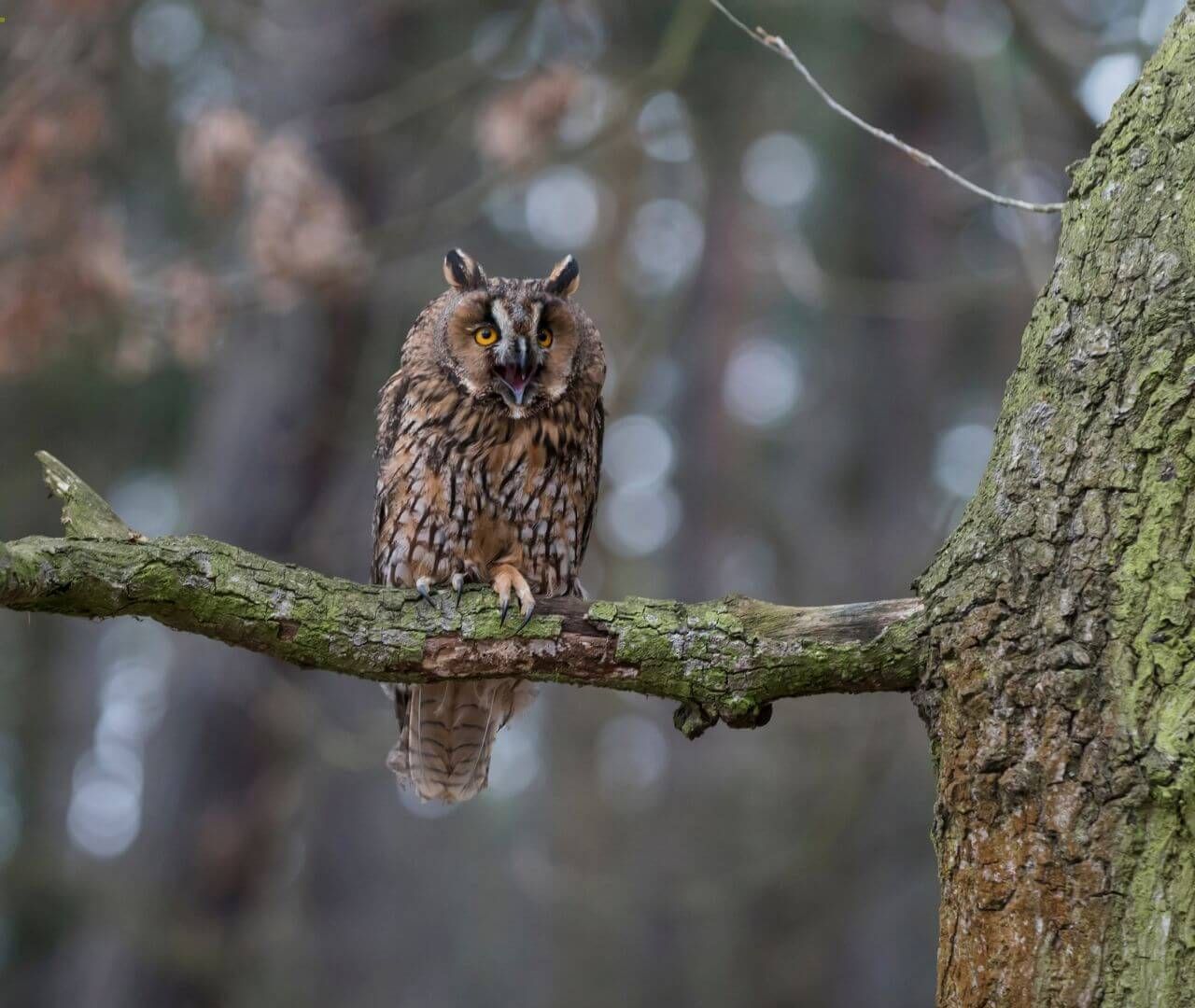Owls

Let's Learn About Owls
Word of the Week
Vertebrae
Vertebrae are the small bones that make up backbones. This is why animals with vertebrae are called vertebrates.
Owls can turn their heads much further than we can because they have 14 neck vertebrae while humans only have 7.
Fast Facts
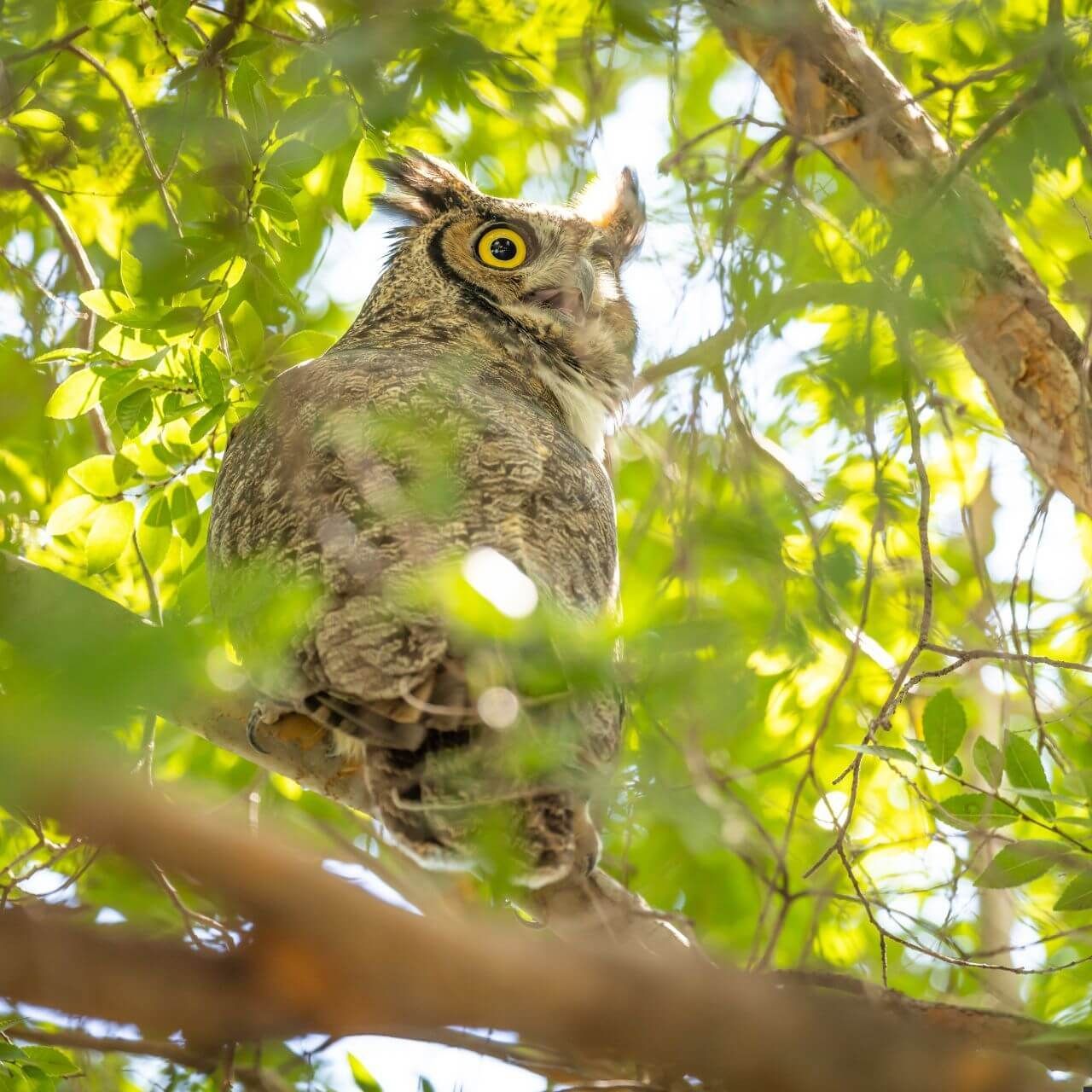
Where do owls live?
Owls are found on every continent except Antarctica.
They are found in many habitats, depending on the species. Owls live in deserts, grasslands, forests, and even the freezing Arctic tundra.
What do owls eat?
Owls are carnivores, meaning they eat meat.
An owl's diet depends on where they live and how big they are. Small owls eat insects and small rodents. Large owls eat larger rodents, birds, and rabbits.
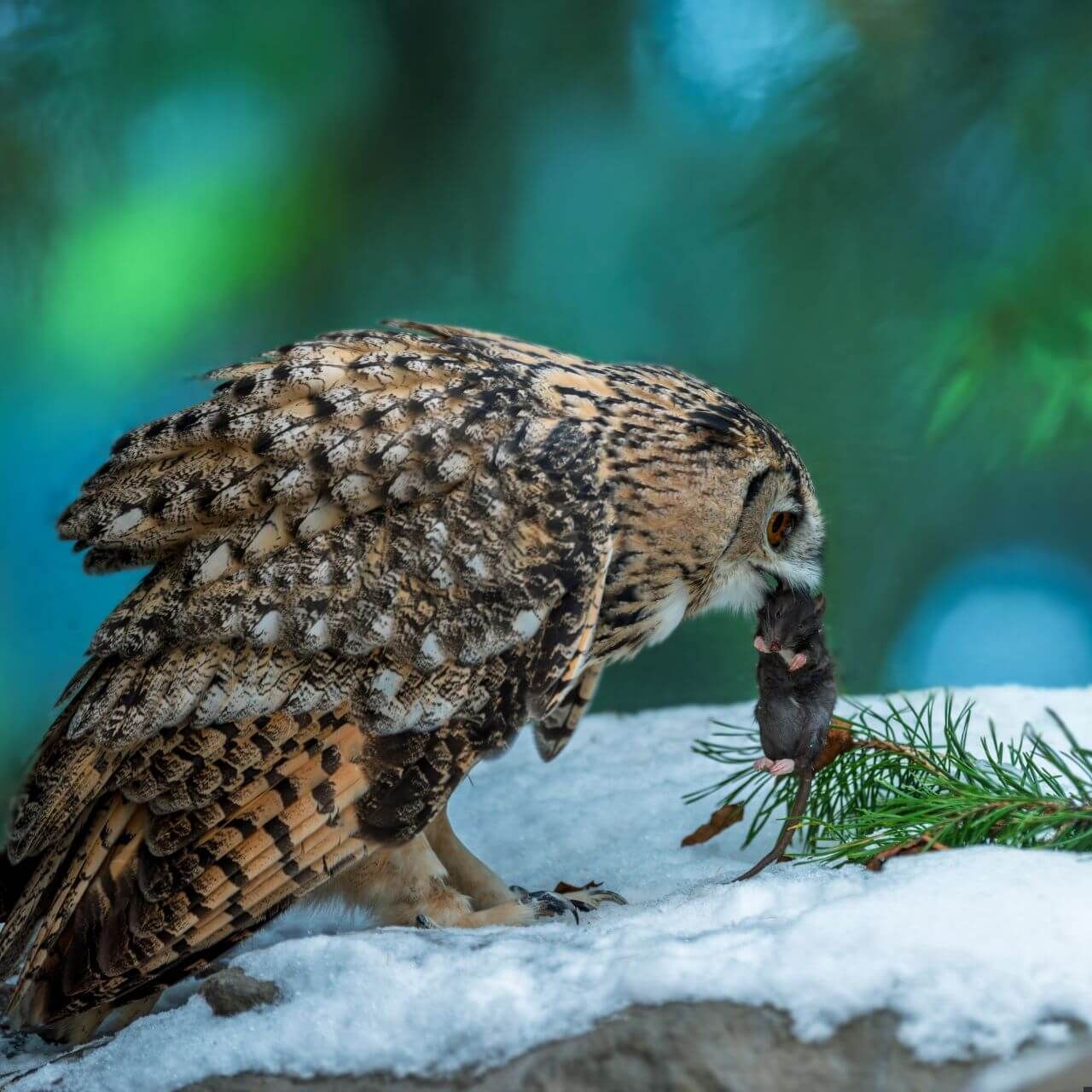
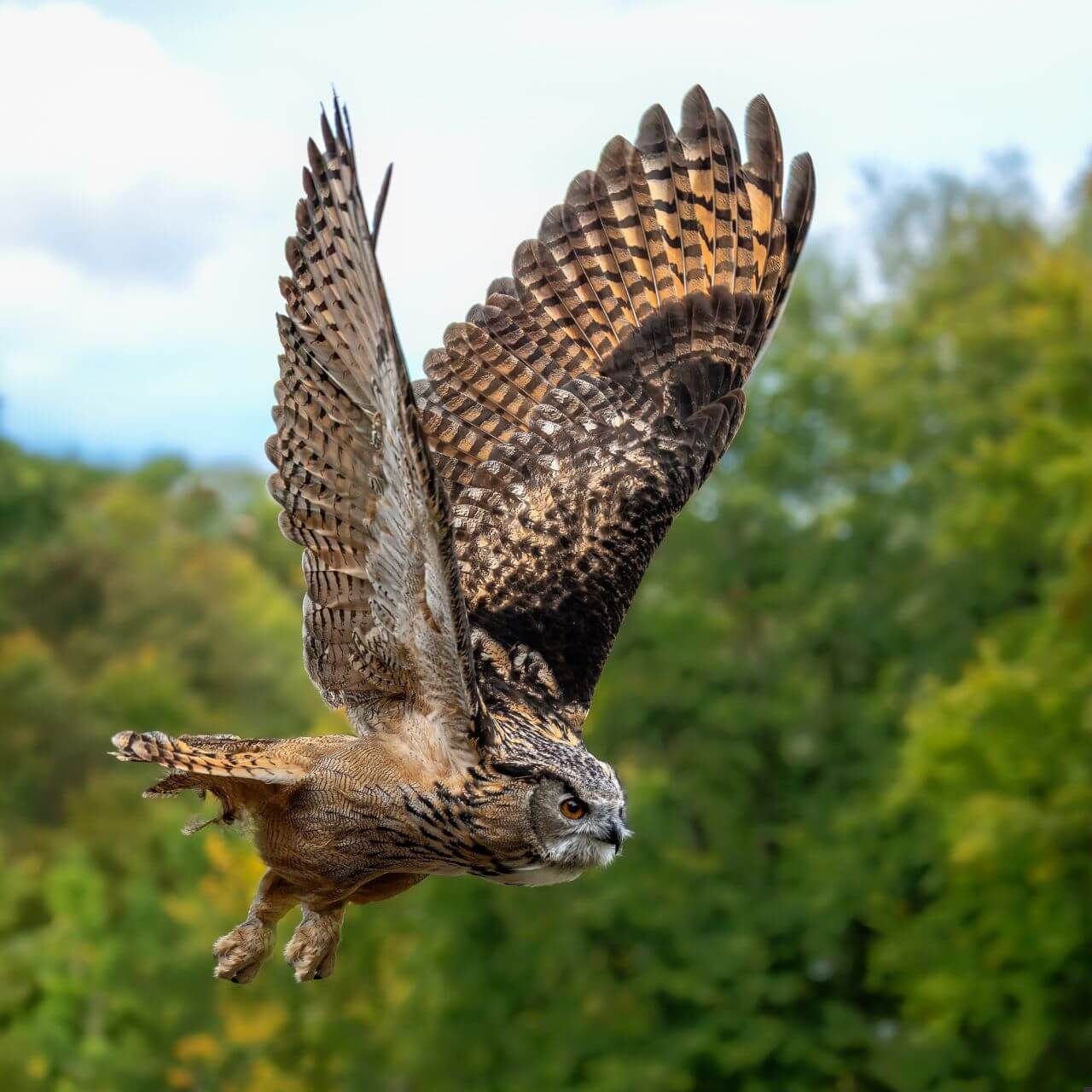
What traits do owls share?
Owls are an order of birds with many traits in common. Most owls...
- Are large, powerful predators.
- Have a sharp beak and talons.
- Silently attack prey from the sky.
- Have a strong sense of hearing and vision.
- Can turn their heads 270 degrees.
How many owls are there?
There are roughly 200 species of owls.
Owls face many threats in the wild, causing some species to become endangered or vulnerable to extinction. They face threats like habitat loss, poaching, and invasive species.
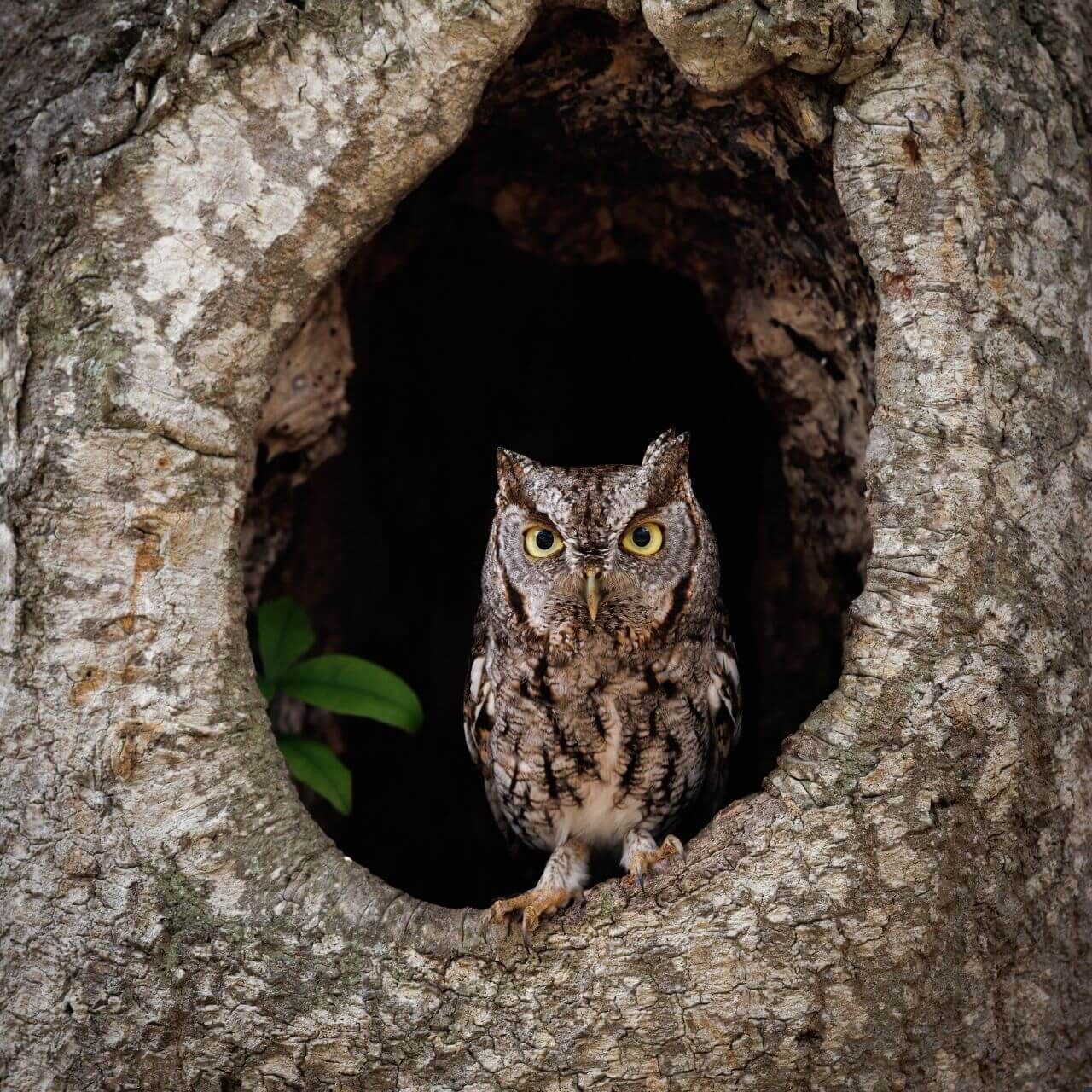
Species Spotlight
Burrowing Owl
Athene cunicularia
Most owls are large, powerful birds that hunt at night and spend the day resting in trees. However, some owls, like the burrowing owls, are a little different.
Shelter:
Owls typically live in habitats with lots of trees, but not the burrowing owl. Burrowing owls live in grasslands and deserts. They shelter in underground burrows because there are few trees. They use their feet to dig burrows. They often steal burrows from badgers, prairie dogs, and armadillos. Burrows provide a safe place to rest and raise chicks.
Size:
Burrowing owls are small compared to other owls. They are less than one foot tall. They have relatively long legs that help them look for prey and predators in tall grass. Burrowing owls take shelter in burrows when predators like hawks, snakes, and foxes approach. They mimic the sounds of rattlesnakes to warn predators to stay back.
Time Active:
Another trait that makes burrowing owls unique is the time of day they are active. Most owls are nocturnal, while burrowing owls are diurnal. They are active during the day. They hunt in the early morning and evening rather than at night. Burrowing owls hunt from the ground, even though they can fly. They hunt insects, mice, rats, and small reptiles. Some burrowing owls even eat plants, like fruits and seeds.
Unfortunately, a similarity between burrowing owls and other owls is that they are threatened by habitat loss. Farms and ranches are built on the grasslands that burrowing owls depend on. To help, scientists are using large pipes to create artificial burrows for burrowing owls in protected areas. Learn more and see how you can help!
BRAIN BLAST
Gather information on 4-5 different species of owls. Determine if they have traits different from other owls. Are they diurnal? Are they solitary? Where do they make their nest?
Conservation Corner
Saving One Owl by Removing Another
Spotted owls live in cool forests in northern California and Oregon. For years, deforestation destroyed their habitat. Spotted owl populations declined quickly, so scientists worked fast to create protected areas for spotted owls to recover.
Unfortunately, spotted owls now face another problem. Large, powerful barred owls have invaded their home.
Barred owls are usually found in eastern North America. Over the last hundred years, they moved west as their usual habitat changed into farms and cities. They now live in the same forests as spotted owls. Barred owls are bigger and more powerful than spotted owls. They steal food and nesting sites from spotted owls, causing the population of spotted owls to continue to shrink.
Scientists hypothesized that spotted owls would be more successful if barred owls were removed from the habitat. They tested this theory in small parts of the forest. The results showed that the population of spotted owl stopped shrinking when barred owls were removed. Based on these results, scientists aim to remove barred owls from more regions to protect spotted owls.
Many scientists debate whether removing barred owls is fair or ethical. To save one owl species, we have to remove another. Scientists are still working to discover other ways to save spotted owls without harming barred owls, but no other solutions have been tested yet. Learn more about the conservation program and its debate by clicking the link below.
Spotted Owl
~214 California condors in captivity
~347 in the wild in California, Arizona, and Mexico
Bird of Prey Problems
Determine which traits make owls similar to other birds of prey (like hawks and eagles) and which traits make them different.
Learn More!
Glossary
Ambush
Sneak attack.
Bird of Prey
A group of carnivorous birds with sharp, hooked beak and talons.
Carnivore
An animal that eats primarily meat.
Camouflage
The ability for an organism to blend into their surroundings usually to hide from prey or predators.
Competition
An interaction between organisms where both are working to obtain the same resource.
Conservation
The act of preserving the environment.
Diurnal
To be most active during the daytime.
Endangered
An organism that is threatened with extinction.
Fledge
To develop flight feathers and the ability to fly and live independently.
Habitat Loss
When habitats are destroyed or changed into human-managed land such as farms or cities.
Monogamous
Having one mate per breeding season.
Nocturnal
To be most active at night-time.
Parliament
A group of owls.
Predator
An animal that hunts other animals for food.
Prey
An animal that is hunted and eaten by another animal.
Solitary
To live alone.
Species
A closely related group of animals with similar characteristics that are capable of reproducing (example: there is 1 species of gray wolf).
Talon
Strong, claw-like feet of birds of prey used for hunting.
Vertebrae
The small bones that make up backbones.

